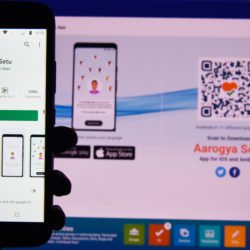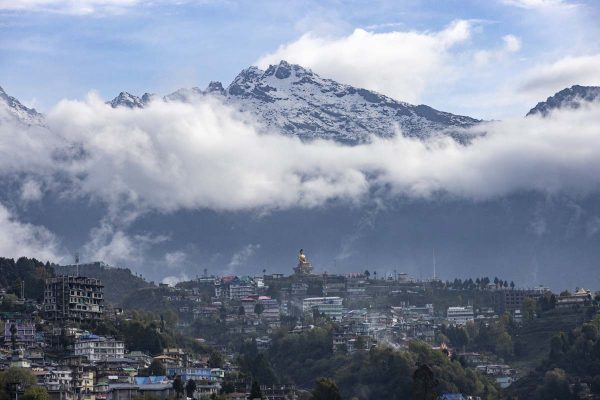
Arbab Ali
A mobile app is costing India’s poorest workers their wages
On a blazing afternoon in July, the white heat made worse by the humidity, so that each step through the thick air required the summoning up of near-superhuman will, Pooja Devi, 33, walked for over a mile, much of it uphill. She climbed to a spot about 500 feet off the ground.
Up here, on a hill in the Aravalli Range, mountains so ancient that they trace their origins to a Precambrian event, Pooja was finally able to get her smartphone to connect to the internet.
We are about an eight-hour drive from Delhi, in a village in Ajmer, a district in the northern Indian state of Rajasthan. Pooja is an official, or “mate,” responsible for helping to log the attendance of workers in a national employment scheme.
The rural workers who resort to this scheme — the “Mahatma Gandhi National Rural Employment Guarantee Act” (MGNREGA) — are so desperate for jobs that the government guarantees them 100 days of unskilled manual labor in a year at barely subsistence wages. A day’s work, usually about four hours in a baking field, earns a worker less than three dollars.
Once keeping track of workers enrolled in this massive welfare project meant making manual entries into logbooks. Now, as with most things involving an Indian government keen to appear tech savvy, there’s an app for that.
India’s federal government announced in May that the app – with its unlovely, rather alarming name, the “National Mobile Monitoring System” (NMMS) – is mandatory. Manual logs of worker attendance will no longer be kept. If there are teething problems, government functionaries breezily asserted, they will be addressed and remedied.
The Ministry of Rural Development has said the app — developed by the National Informatics Center, which has an annual budget of around $150 million — would lead to “more transparency and ensure proper monitoring.” With the use of “geo-tagged photographs” taken of the workers on arrival and departure, the app would apparently help “in increasing citizen oversight of the program.”
Chakradhar Buddha, a researcher at LibTech India, which advocates accountability and transparency in governance, scoffs: “If they think the app is so efficient, why don’t they put it in the public domain for everyone to see?”
Instead, he says, by being so dogmatically technocratic and centralized, the government has opted “for a top-down approach in which workers cannot hold public officials accountable.” Social audits and an engaged citizenry, he adds, are far better ways to improve transparency.
Pooja has had to walk to the top of this hill nearly every day since the government made it mandatory to register workers in the scheme through the app,
“If I don’t do this,” Pooja says about her daily trudge up the hill, “the workers won’t get paid.”
On the day we met, despite finally getting her phone to work, Pooja couldn’t access the app. She walked back downhill to the village council but no one could help. “Now,” said a frustrated Pooja, “the workers are going to come after me. This is the third day I have not been able to register them and they’re going to blame me for their lost wages.”
Until a month ago, she says, she’d never touched a smartphone and had barely heard of Facebook and WhatsApp.
Her area has only one mobile network tower. It belongs to Reliance Jio Infocomm Limited, better known as Jio, India’s largest mobile network operator. Jio is the telecom arm of a giant conglomerate run by Mukesh Ambani, on some days Asia’s richest man (a title he swaps back and forth with an Indian rival in an ongoing battle of the billionaires).
Jio bid over $11 billion last week to dominate a 5G spectrum auction by the Indian government, enabling the company to build, it said, “the world’s most advanced 5G network.” Right now, though, despite Jio’s 426.2 million users and its pan-India coverage, it appeared India’s smartphone revolution had not reached Pooja’s village. My phone showed no bars; making a call was not an option, let alone surfing the internet.
Another MGNREGA mate, Leila Devi, told me she had spent 13,000 rupees (a little over $160) on her smartphone — the equivalent of about 55 days of earnings. The average price of a smartphone in India is 16,323 rupees (over $200), which equals 75 days of wages, or three-quarters of the entire wage guaranteed by the program in a given year.
On top of Leila’s investment in her phone, she pays about $5 every month for her data package. The government does not even partially reimburse mates for either the cost of their phones or their bills. Many mates I spoke to also pointed out that in order to run the NMMS app effectively they had to buy smartphones with specifications that add to the price. The cheapest phones available in the market will not do.
Then there’s the cost of repairs. One mate, Bina, told me she had dropped her phone and that it no longer worked as it should. “I can’t afford to get it fixed,” she says, “or get a new one because I’m still paying off this phone.” The now damaged phone cost Bina about $140, the bulk of which she still owes in monthly installments.
Bina now worries that her malfunctioning phone will mean that she loses her job.
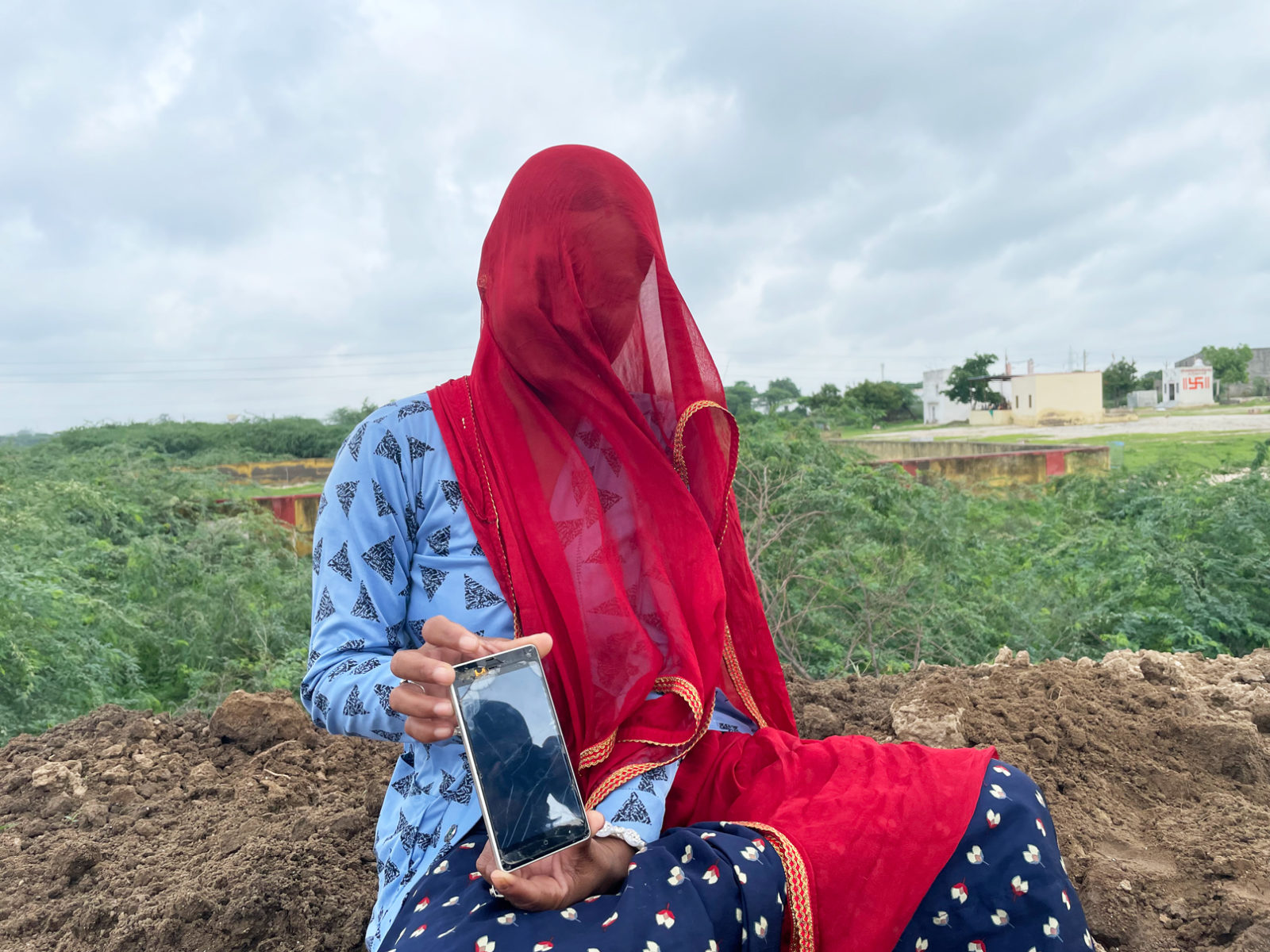
After the pandemic wreaked havoc on construction and other labor-intensive urban jobs in India, over 150 million people have turned to MGNREGA to top up their meager incomes. India’s federal government is struggling to cope.
In June alone, more than 30 million people sought work through the scheme. The current demand for work is unprecedented in the decade and a half since MGNREGA was established in 2006. The numbers reflect an unemployment crisis in India that is belied by the country’s relatively high economic growth. A private research organization, the Center for Monitoring Indian Economy, reported that in June 43.7% of young Indians from the ages of 20 to 24 were unemployed.
Millions of people in Rajasthan have little option but to do the low-paid manual labor that is typically demanded of MGNREGA workers.
The chronic underestimating of costs and the subsequent drip-feeding of funds to state governments means payments to workers are routinely delayed. This even though the actual cost of the entire program represents — as the Belgian-born economist Jean Drèze, an architect of MGNREGA, has written — less than 1% of India’s three-trillion-dollar economy, the fifth largest in the world.
Shockingly, the Indian government still owes over $1.5 billion in unpaid wages to workers who are living hand to mouth. Yet almost nothing can be done to recover lost pay.

Standing in a muddy field in rural Rajasthan watching laborers toil in the heat, it’s hard to imagine that all this work might go unpaid and unacknowledged because the government mandates the use of a glitchy app in rural areas with patchy network coverage.
By six in the morning, the workers are assembled to have their attendance recorded on the app. Pooja tries to get her phone to cooperate.
She fumbles as she takes pictures, trying two or three times before she is satisfied. This morning, she is faced with 100 workers divided into groups of five. It would normally, she says, take her about half an hour to register them manually in the “muster roll” but with the app it takes her at least an hour.
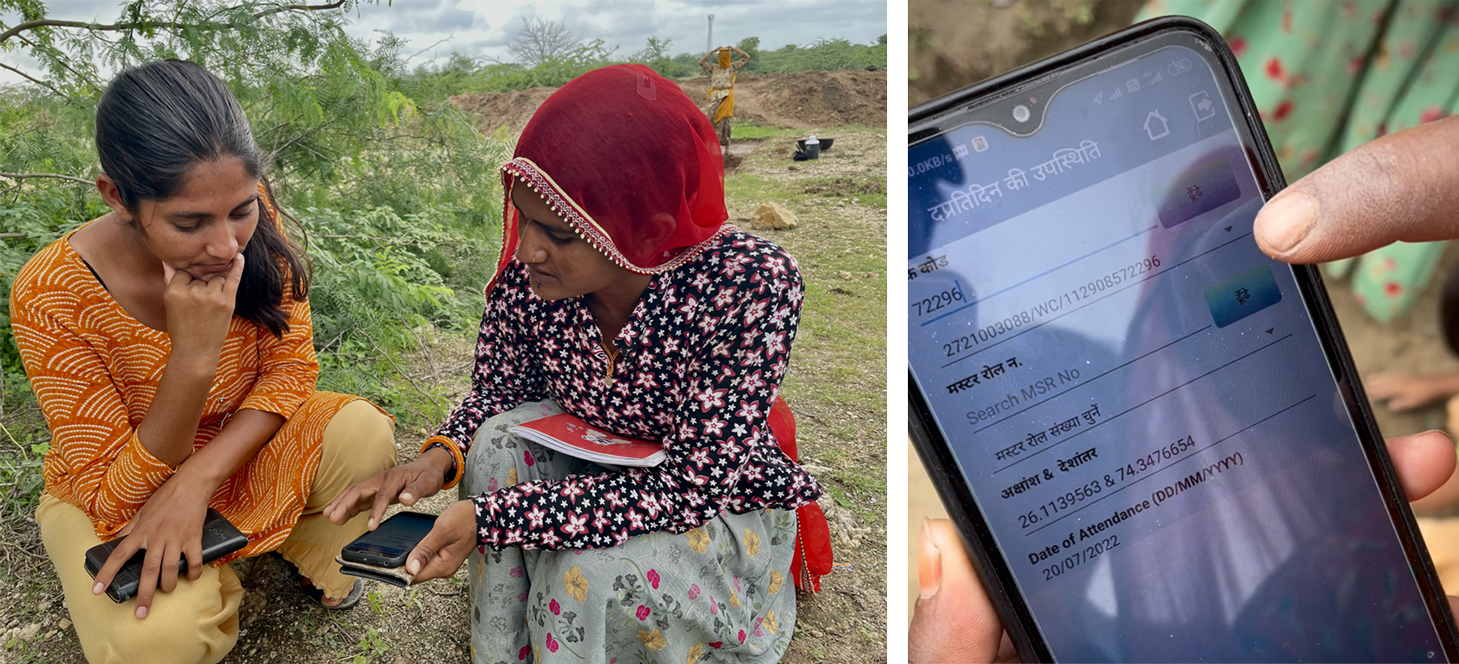
When the workers are finally able to address their tasks, the heat is already stultifying. On the day I visited the site, the workers were mostly women, dressed in traditional Rajasthani clothing — long, brightly patterned skirts and tunics and vivid veils that they wore over their heads and with which they sometimes partly covered their faces.
MGNREGA has long been a bastion for women in a culture that does not support working women. Recent data from the World Bank shows that women make up only 20.3% of the Indian workforce. But women made up 54.5% of MGNREGA workers last year.
As if to illustrate these workplace dynamics, there is a makeshift creche at the site. Under a tin roof, held up by metal poles rather than walls, were six or seven children playing with mud. The temperatures, as the day wears on, reach up to 104. In other sites I visited, there were tents for the children. Mostly, though, I saw even very small children help their mothers with their assigned tasks rather than take shelter from the heat. The children filled pans with mud that their mothers then carried away on their heads.
Maya Ramu, a graduate student and union worker, told me that even the small sum of money the women earned doing such work was “an opportunity for economic freedom. They do not have to wait for their husbands to send money.” The husbands generally go to the cities to look for work, though this is changing in the wake of the pandemic as jobs grow scarce.
It’s strange, Ramu adds, that despite progressive employment practices, including reserving a third of MGNREGA jobs for women, the authorities did not stop to consider the effect that a smartphone requirement might have on employing women as site supervisors.
A 2020 survey by a trade body of mobile network operators showed that Indian women were 28% less likely than Indian men to own any kind of mobile phone and 56% less likely to access mobile internet. In Rajasthan only 50.2% of women, revealed the comprehensive National Family Health survey, even own a phone. Inevitably, poorer women and women from traditionally marginalized castes are even less likely to own or have access to any kind of phone, let alone a smartphone.
By eleven, five hours after the workers assembled for Pooja to photograph them on her phone, they are finished and ready to leave. They have barely had a break. When the workers rest, Pooja reminds them to finish the task at hand so that their already inexcusable wage is not reduced further. At the end, she stands with a measuring tape to ensure that the day’s work is complete.
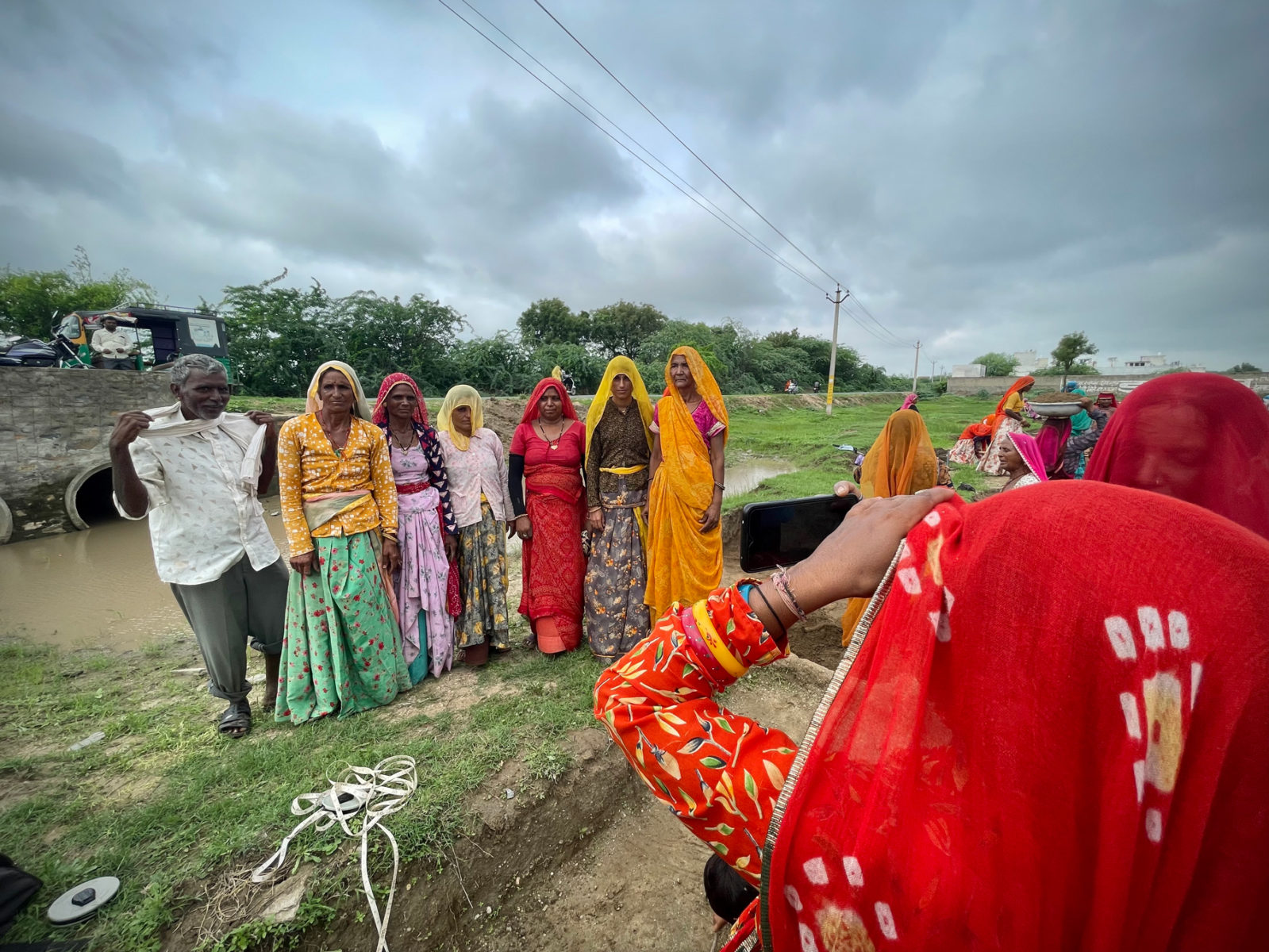
Tamanna has walked two miles to get to the site. She left at dawn, while her children were still sleeping. Two days ago, she tells me, she and 97 other women had to wait for hours after work beneath the unforgiving afternoon sun because servers were down. Yesterday, monsoon rains meant the internet was down again.
Pooja keeps her phone wrapped in plastic during the rainy season, fishing it out only to access the app but it’s rare that her phone has any service. She must walk again to a spot where her phone actually works.
Just weeks ago, mates across Rajasthan could not access the app because internet services had been suspended. India leads the world in terms of frequency of shutdowns and disruptions. While violence in an increasingly polarized country cannot be blamed on the app, every day lost is a calamity for MGNREGA workers.
In Rajasthan, the internet shutdown in late-June lasted for four days.
One MGNREGA worker told me that by the fourth day she could no longer put food on the table, unable to buy even the “atta,” the flour with which to make rotis. “Both my sons slept on empty stomachs that night.” But, she said, “we will fight this app.”
Thousands of MGNREGA workers from 15 states gathered on August 2 in Jantar Mantar, the traditional site for protests in the Indian capital New Delhi. They will be there for three days as they give vent to a range of dissatisfactions, including unpaid wages and broad underfunding.
The app, many at the protest said, is exemplary of the government’s arrogance. “There’s no app that records attendance for ministers and officials,” a protestor remarked, “so why do they need to keep tabs on us?”
The story you just read is a small piece of a complex and an ever-changing storyline that Coda covers relentlessly and with singular focus. But we can’t do it without your help. Show your support for journalism that stays on the story by becoming a member today. Coda Story is a 501(c)3 U.S. non-profit. Your contribution to Coda Story is tax deductible.






